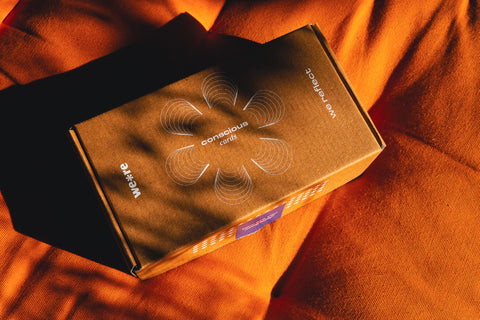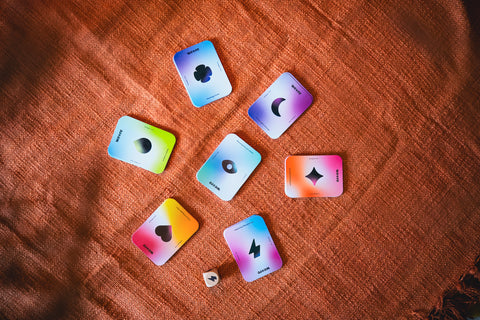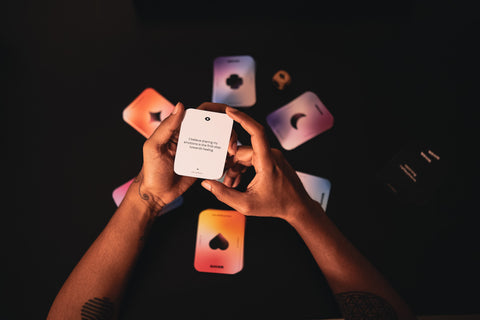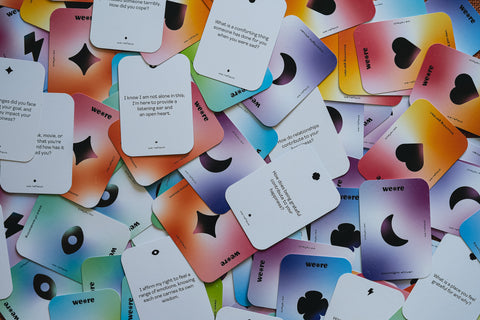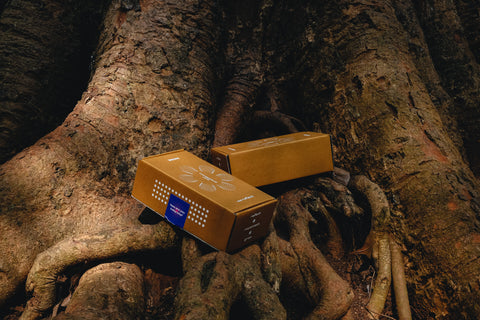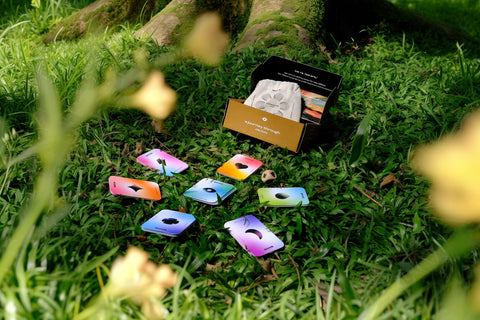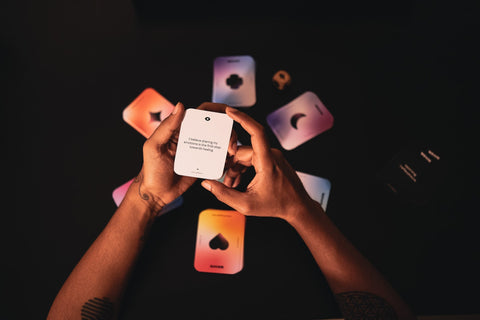
creating conscious cards: a journey into meaningful conversations
Unlike any other idea that came to us, my partner Aleena and I decided to hold on to this concept of building conversational cards. During our research phase, we realized the possibility of creating cards that help people reflect. We noticed a disconnection among people—though we're all well connected digitally, something was still missing. This was our journey to find that "something."
Viewed through first principles, conversation cards are elegantly simple tools that address our deep need for meaningful connection. They work by providing carefully crafted open-ended questions that anyone can answer. Effective cards balance thoughtful question design, practical physical construction, and adaptability to different social settings. Ultimately, they serve as bridges between our inner worlds rather than mere random conversation generators.
We started the research to create our own conversation cards—as designers, we thought it would be a fun project, and at the very least, we could use them among ourselves. For one year, this idea grew in us. It was a time of learning and unlearning, with new experiences that changed our perspectives on life. After we created the brand "we reflect (we*re)," it became very clear in our minds that we would start with conversation cards. The next question was what topic we would begin with, which took us several months before we decided on emotions.
Why emotions?
Looking back, it seems so obvious now. Emotions are our universal language. No matter who we are or where we come from, we all experience love, anger, fear, gratitude, happiness, and sadness. These feelings are the threads that connect our human experience.
As people who have always been fascinated by the depth and complexity of human emotions, we wanted to create a tool that would help people explore their emotional landscapes together. Not just the comfortable, pretty parts—but the full spectrum of what makes us human.

The structure and how to use the cards
We thought about gamification, considering how we could add one more layer of interaction. Thus, our "soul cube" was born, inspired by the classic game of snakes and ladders. We organized six emotions—love, anger, fear, gratitude, happiness, and sadness—into symbols and sets of cards. Gratitude wasn't initially among the six basic emotions according to emotional wheels and books we referenced, but we later added it to balance the more overpowering emotions.
We also created a final set of affirmation cards with the intention of respecting everyone playing the game. When played in a group, if anyone feels uncomfortable sharing, they can pick an affirmation card and read it aloud instead.
But let me come back to the gameplay—actually, it's more than a game; it's a tool for reflection. When played in groups, Conscious Cards start with an opening reflection card, which is included with the intention to ground people. It begins like this: "As we start, let's create a space where we all feel comfortable sharing. Let's listen to each other, respect different experiences, and be open to sharing our thoughts. Together, we can connect and perhaps gain new perspectives along the way." This creates a space that's not just about responding to prompts—it cultivates listening without judgment and encourages vulnerability.
It all starts with rolling a dice (soul cube). This simple act of chance is actually quite powerful. The randomness helps us move beyond our comfort zones, encouraging us to explore emotions we might normally avoid. When a challenging topic comes up because of a dice roll, it feels less personal and more like a shared experience. This mirrors real life too—our emotions rarely appear in a neat, predictable order, but often surface randomly throughout our days.
The Conscious Cards reveal their most transformative power when used intentionally for self-exploration, creating a structured pathway to deeper self-awareness and emotional growth. In the quiet solitude of self-reflection, these cards become mirrors reflecting aspects of your inner landscape you might otherwise overlook or avoid.
There are multiple ways of using these cards, as they are a tool, and it's up to the individual or group how to use them. As creators, if they bring groups together or help a person reflect, that's only the minimum of what we expect—and it's enough to make us happy.

A path to deeper connection
In creating Conscious Cards, we set out to address that elusive "something" missing in our modern interactions. What began as a fun design project evolved into a mission to help people dive beneath surface-level conversations and rediscover the art of meaningful connection.
In today's world where digital communication dominates, these physical cards offer a tangible way to slow down and truly engage with one another. Whether used among friends, family members, colleagues, or even strangers, we've seen how these simple prompts can unlock surprisingly profound moments of understanding and empathy.
We invite you to experience Conscious Cards for yourself. Take a chance on vulnerability, embrace the randomness, and see where these emotional explorations might lead you. After all, it's in these authentic conversations—where we share our fears alongside our joys, our gratitude alongside our sadness—that we truly find what connects us as humans.
The cards are simply the beginning. The real magic happens in the conversations that follow.
With love,
Ajith

